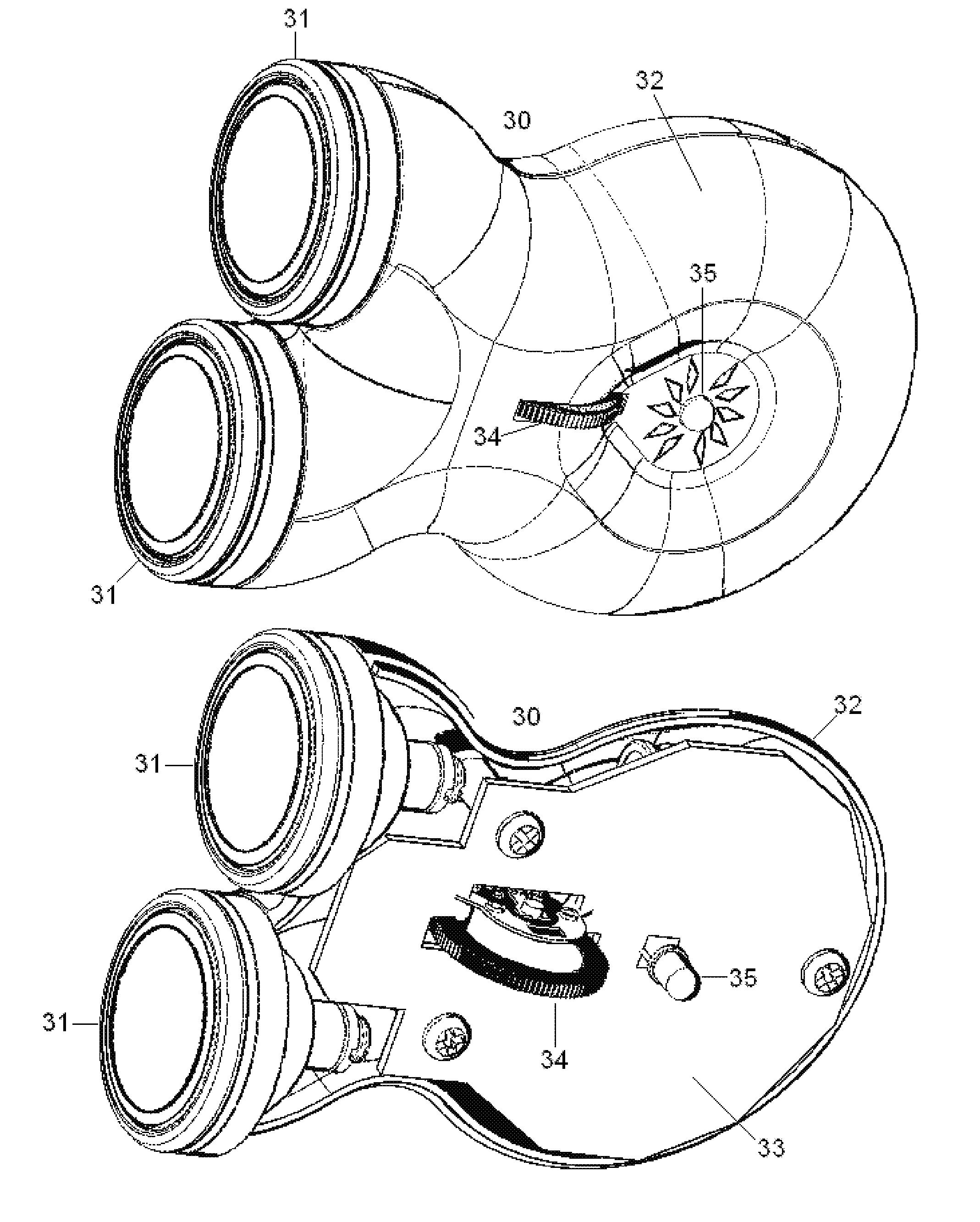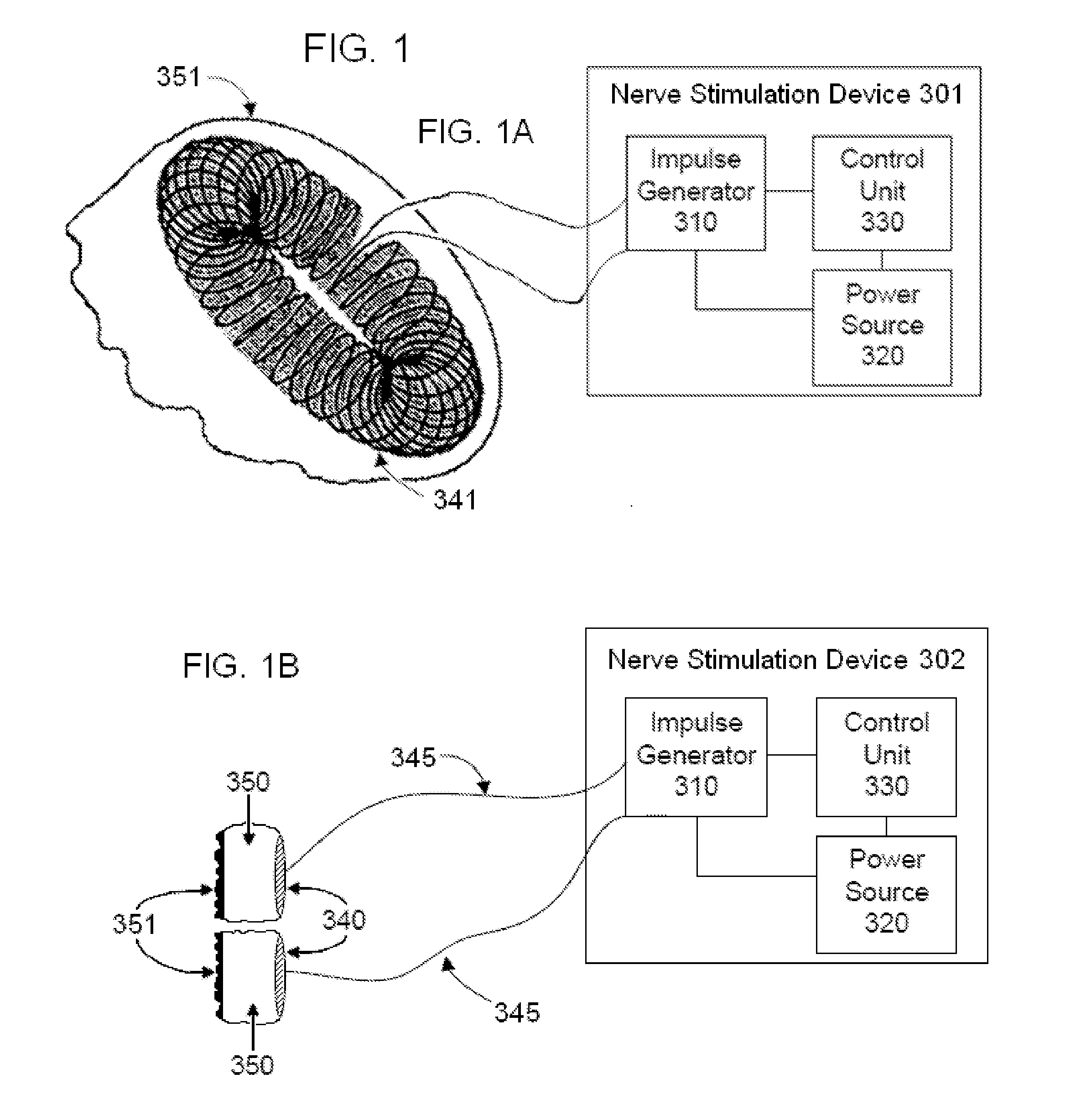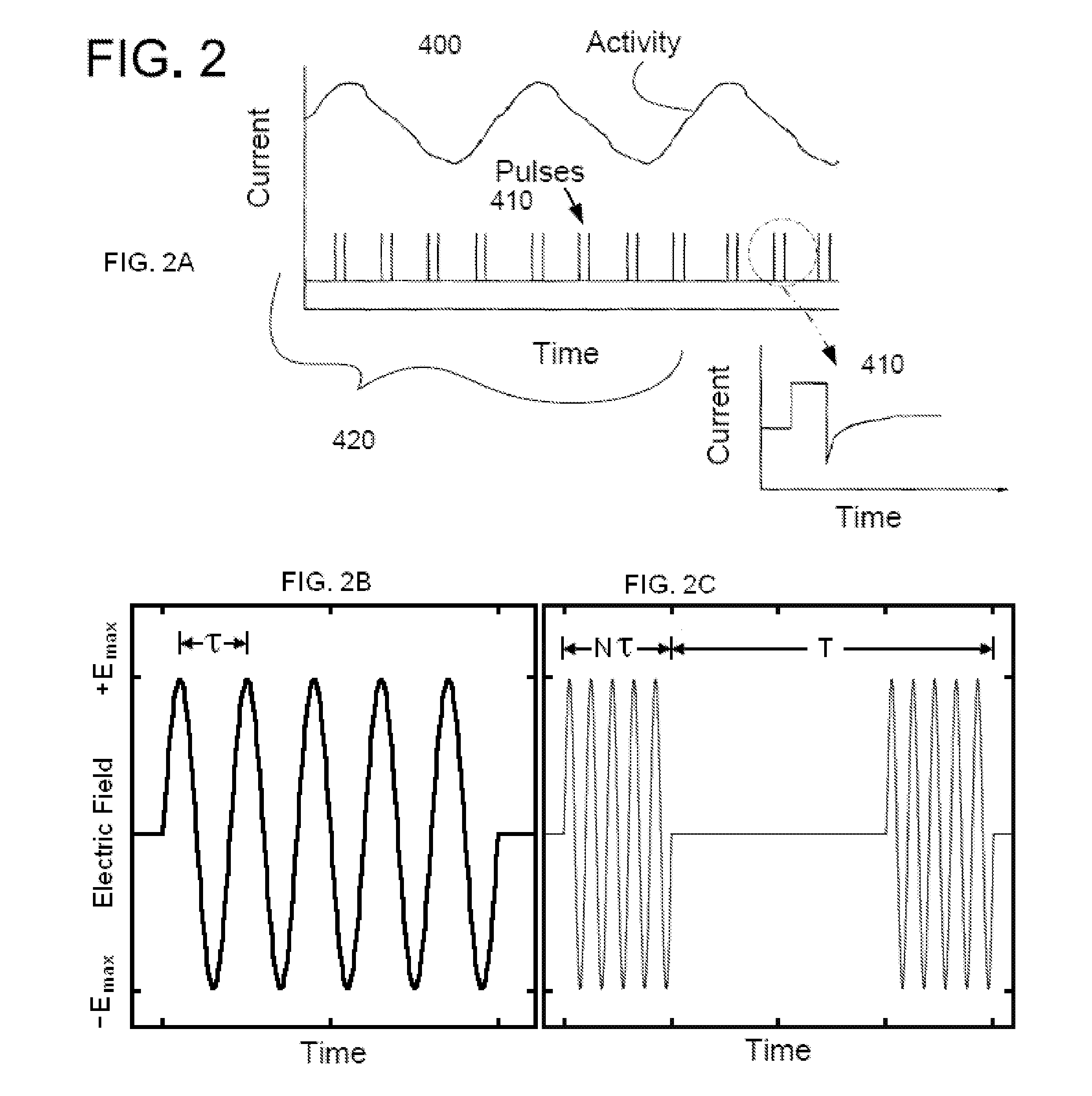A variety of techniques and mechanisms have been designed to produce focused lesions directly in target nerve tissue, but collateral damage is inevitable.
In many cases, these medicinal approaches have side effects that are either unknown or quite significant.
Unfortunately, the beneficial outcomes of
surgery and medicines are often realized at the cost of function of other tissues, or risks of side effects.
The electrical circuits for magnetic stimulators are generally complex and expensive and use a
high current impulse generator that may produce
discharge currents of 5,000 amps or more, which is passed through the stimulator coil to produce a magnetic pulse.
Despite its attractiveness, non-invasive electrical stimulation of a nerve is not always possible or practical.
This is primarily because the current state of the art may not be able to stimulate a deep nerve selectively or without producing excessive pain, because the stimulation may unintentionally stimulate nerves other than the nerve of interest, including nerves that cause pain.
When some nerves are stimulated electrically, they may produce undesirable responses in addition to the
therapeutic effect that is intended.
For example, the stimulated nerves may produce unwanted
muscle twitches.
However, previous capacitive stimulating electrodes have required the use of a
high voltage power supply, which is accompanied by the inherent danger of
high voltage breakdowns of the
electrode's
dielectric material [L. A. GEDDES, M. Hinds, and K. S. Foster. Stimulation with
capacitor electrodes.
They often, but not always, also exhibit
urge incontinence that is associated with the leakage of
urine due to bladder muscles that contract or spasm inappropriately and / or with dysfunction of urethral sphincters that would normally prevent the passage of
urine.
However, side effects and
urinary retention occur in approximately 20% of those who use these medications.
In other patients, the medications are ineffective, such that 75% of patients discontinue the use of anticholinergic medications within one year.
The procedure is expensive, and problems arise in up to a third of the patients, including change in
bowel function, infection, lead movement, pain at
implant sites, and / or unpleasant stimulation or
sensation.
However, this procedure may cause problems associated with
needle insertion, and because significant training is required in order to perform PTNS, it must ordinarily be performed by professionals in an office setting.
However, the use of surface electrodes exacerbates the potential for pain from the electrical stimulation itself.
This is because transcutaneous PTNS as it is currently performed is unable to stimulate the
tibial nerve selectively, potentially causing pain through the stimulation of nearby tissue and other nerves, and because the
tibial nerve itself can sense pain if the stimulation waveform is not properly designed.
Accordingly, the electrical stimulus power must be limited to what is less than the threshold of pain from surrounding tissue and the tibial nerve itself, which in turn limits the ability of transcutaneous tibial
nerve stimulation as it is currently performed to excite portions of the
nervous system that may prevent or
delay episodes of
overactive bladder and
urge incontinence.
A related selectivity problem is that tibial nerve stimulation will induce movements and contractions of
muscle in the toes and foot, such that the electrical stimulus power must also be limited to what is less than the threshold for such movement, thereby limiting the stimulus power that could otherwise be used to treat overactive bladder and urge incontinence.
 Login to View More
Login to View More  Login to View More
Login to View More 


